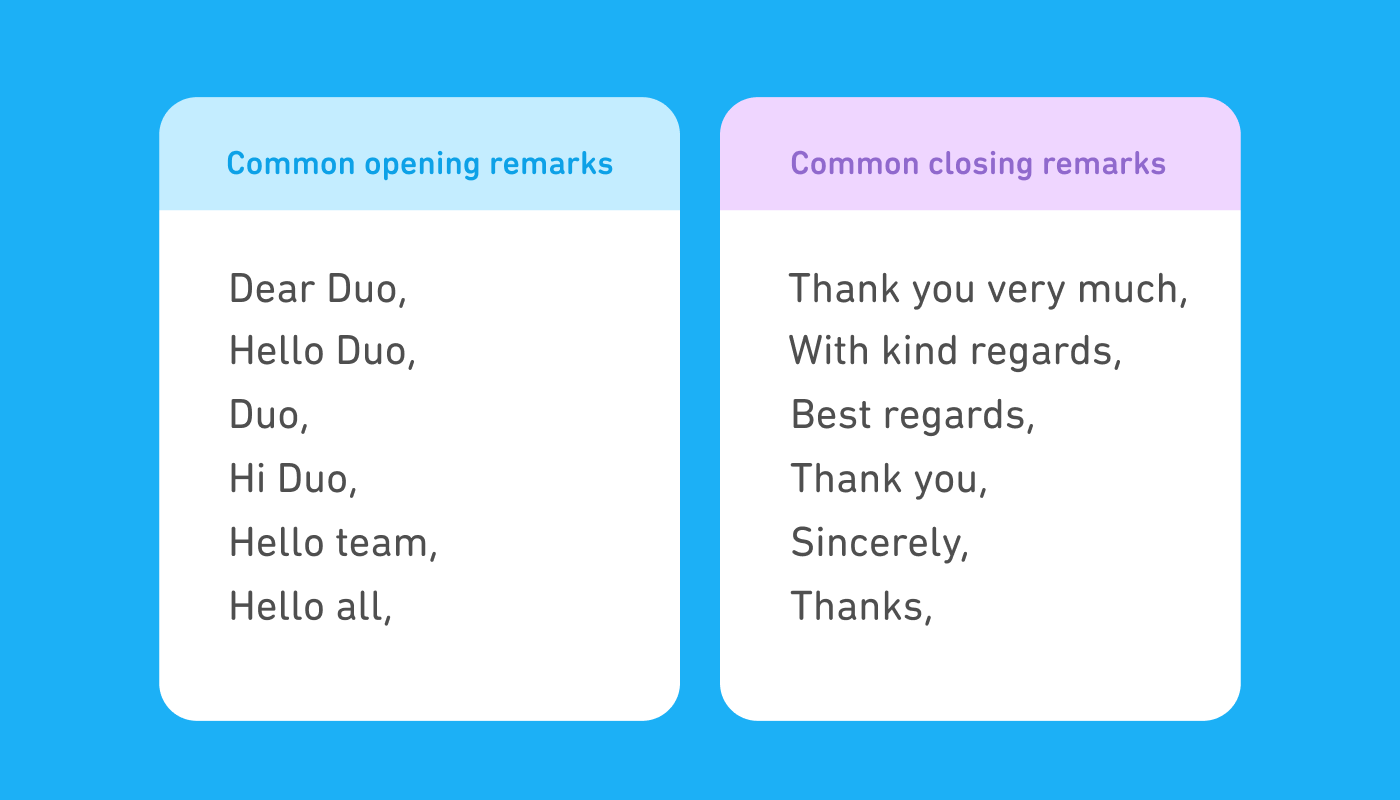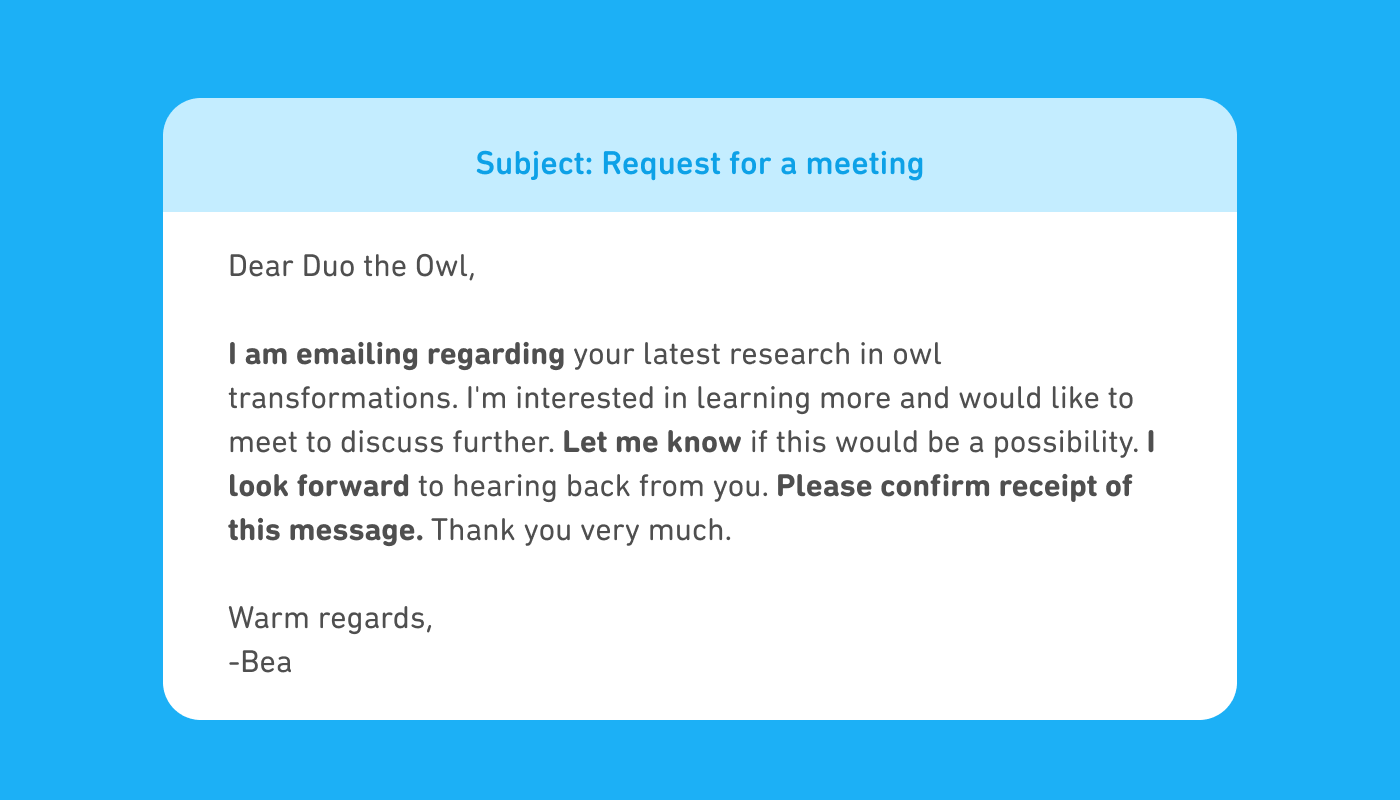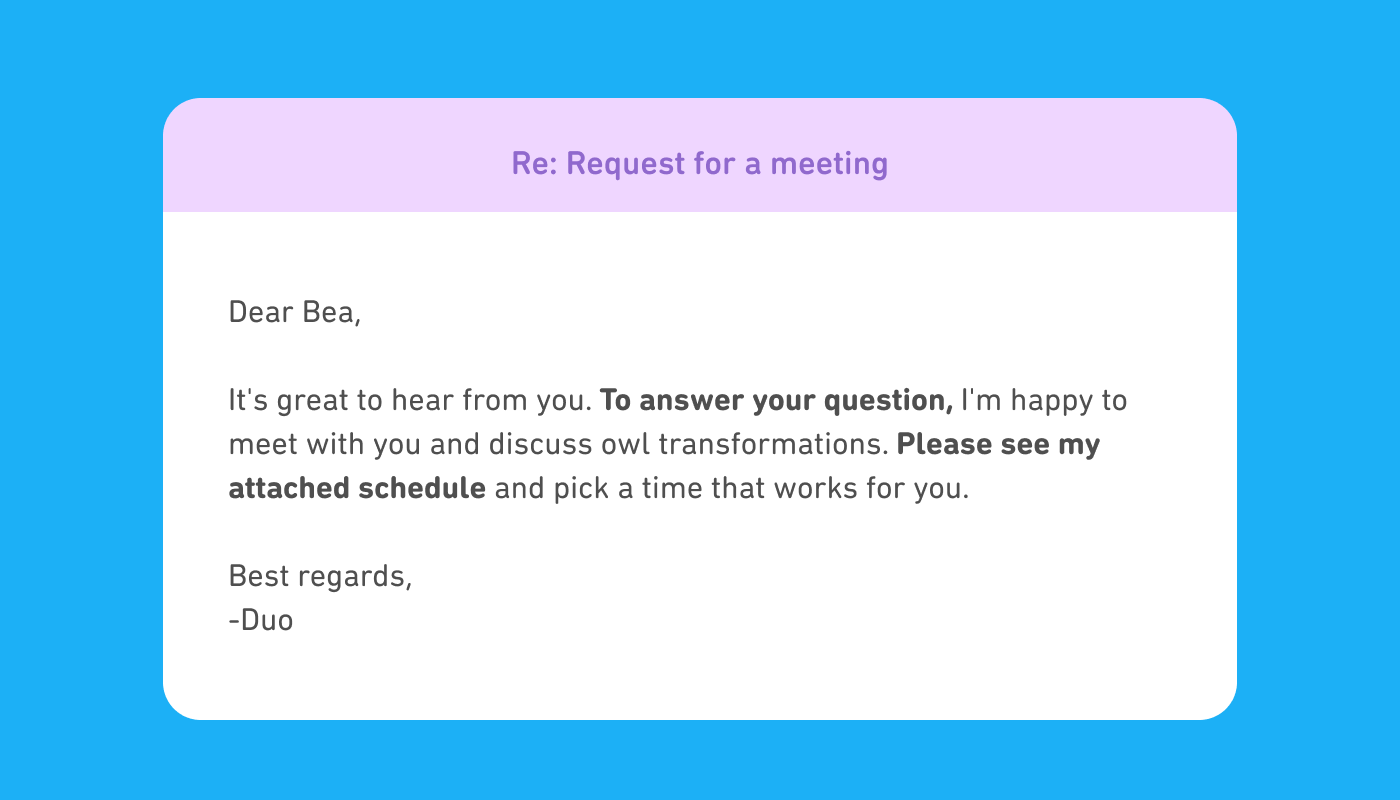Emailing is an important skill for learners, especially if you'll be using English at work!
Here are 6 tips and tricks for writing professional emails in English to coworkers, employers, professors, and more.
Etiquette for English emails
While corporate and academic cultures vary in formality, there are some common practices you can expect to use across most contexts.
💡 Use opening and closing remarks, not just a message by itself.
It’s polite to use opening and closing remarks in each email. Remarks will differ slightly in formality and friendliness, but any of them work in professional contexts. In general, the longer the remark, the more formal it is. For example, Dear is more formal than Hi, and With kind regards is more formal than Thanks.
Here are some options:

Tip: When closing an email, it’s fine to say both Thank you and Best regards. In fact, it's always okay to use Thank you!
💡 Include a programmed email signature block.
Programmed email signature blocks show up automatically at the end of your message whenever you compose an email. You can add a closing remark before your name to ensure consistency and avoid typos.
Signature blocks commonly include your name, website, phone number, company logo, and office hours. You can also write your job title under your name. Avoid including unrelated quotes or images other than your company logo.
💡 Don’t use too many exclamation points.
Even if you’re excited, try to cut back on the exclamation points. It’s okay to use a couple here and there, but too many in a row makes the email more informal.
Tip: If you overuse exclamation points, here’s an easy rule to follow: Never have two sentences in a row with exclamation points. Before sending your email, delete any extras!
Language tips for English emails
In addition to etiquette, there are some useful language tips for writing emails in English.
💡 Language should be professional yet concise.
In emails, it’s okay to use shorter versions of some sentences. For example, using fragments or incomplete sentences is okay, even though they sound robotic in spoken language and would be inappropriate in an essay or report. For example, Will do is a common and brief version of the longer sentence I will do that.
Similarly, it’s okay to use short commands in emails, even though they could sound too abrupt or impolite in spoken language. It’s best to use please with these!
- Please see attached. (Meaning: I attached a document and I want you to look at it.)
- Please confirm receipt of this message. (Meaning: Let me know you got this message.)
Keep in mind that while you can use these short sentences, it's best to avoid “texting” language and more casual abbreviations and acronyms such as LOL, TYSM, TTYL, etc., as these acronyms can be perceived as unprofessional.
Tip: Made a mistake in an email? Don’t panic! Just send a corrected version and write Please disregard the previous email at the beginning.
💡 Don’t be afraid to be straightforward.
Emails are meant to be brief and accomplish something quickly. Since you’re communicating at a distance, you (and your reader!) don’t have the advantage of body language or getting an immediate answer to a question. Instead, you can make up for this by being direct and straightforward.
For example, use these phrases to make clear what your goals and requests are:
- I’m emailing you to confirm/let you know that…
- This email is to confirm/inform you that…
- To answer your question, …
- Let me know if…
Tip: You can end a message with I’m looking forward to your reply to create a gentle sense of urgency if you need a reply right away.
💡 Use regarding and regards.
These two words are used frequently in emails, and while they sound similar, they have very different uses!
Regarding means “on the subject of,” for example, if you’re telling someone what your email is about.
- I’m emailing regarding… (Meaning: The subject of my email is…)
- To answer your question regarding… (Meaning: You had a question about X, and here’s my answer.)
As mentioned above, regards is a closing remark, but there's more to this useful word. The word regards is a noun meaning “greetings.” You can modify your regards with an adjective to sound more or less serious, depending on who you’re emailing. For example:
- Regards, (serious)
- Best regards, (slightly friendlier)
- Warm regards, (friendly)
Now that we’ve examined some phrases to use in emails, let’s put it together and look at a sample email chain!


Emails are designed to help people communicate efficiently, and with these tips, you’ll be emailing in English like a pro in no time!
